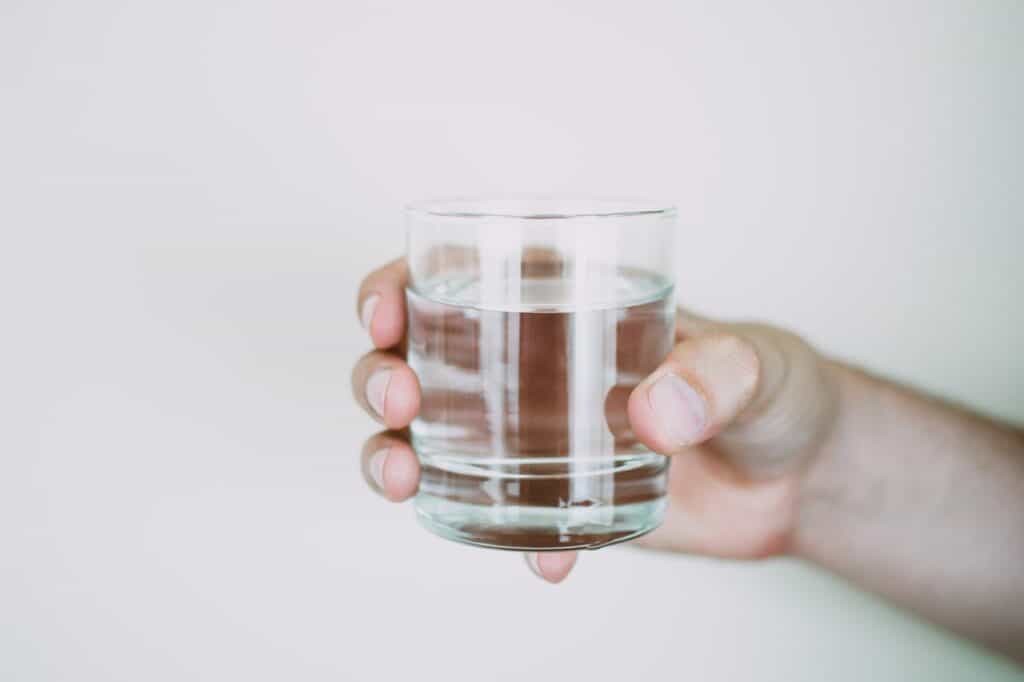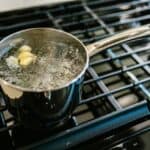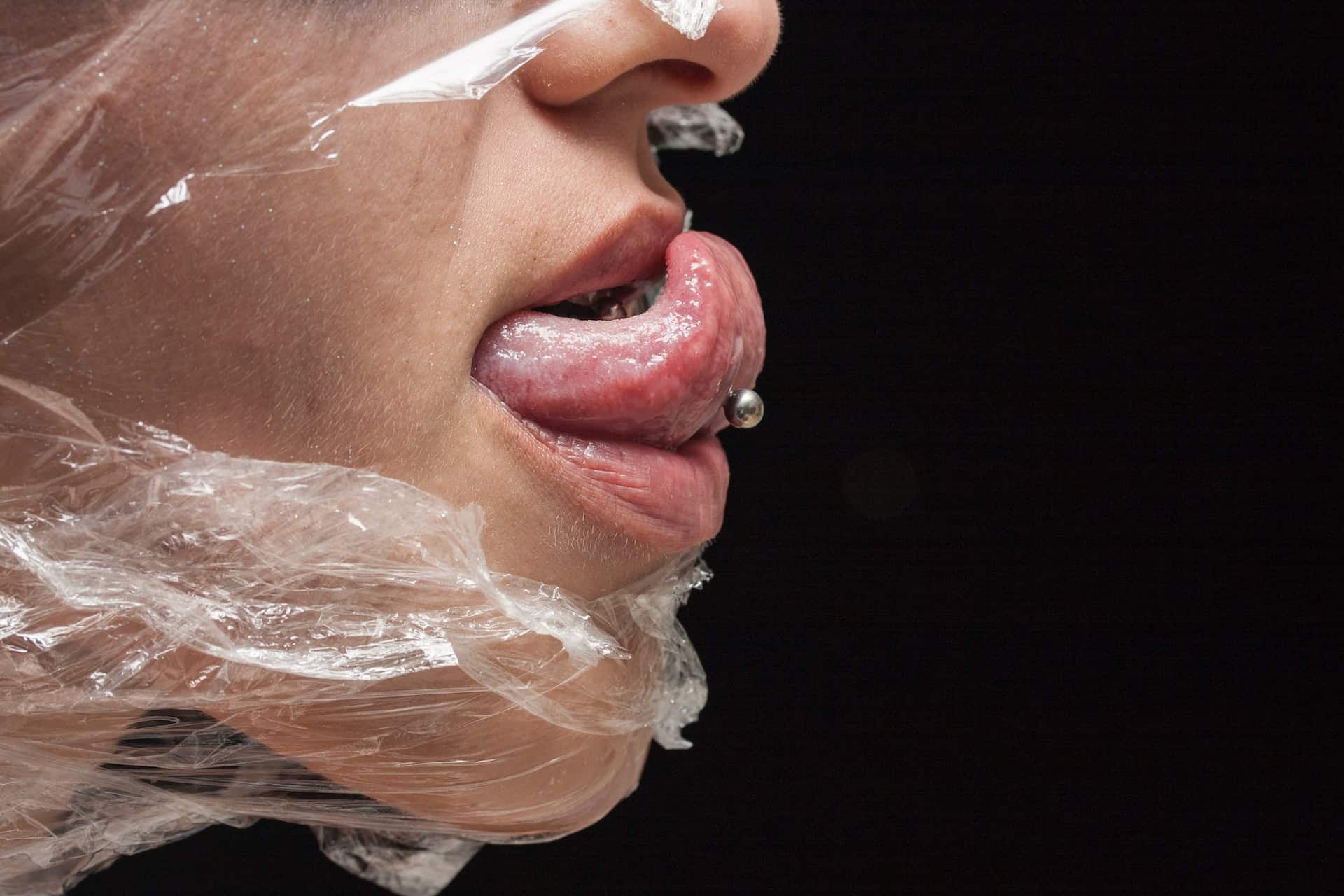Glass is composed of delicate and may crack when subjected to hot temperatures. However, the nature of the glass has a significant influence on whether or not it cracks.
If you put boiling water in a thick glass, the chances of cracking are high. Thin glasses often break less. It sounds odd, but it is caused by the uneven expansion of the inner and outer surfaces.
As such, it is not recommended to put boiling water directly in a glass container since it can lead to thermal cracking. It would be advisable to wait for the water to cool for a period.
Also, it does not matter if it is water, tea, or coffee. If the temperatures are above boiling point, a standard glass will crack.

Can You Put Boiling Water In A Glass?
The chances of your glass breaking are high when you pour boiling water into the container. Notably, if the glass has a thicker material, the cracking probability is increased.
Therefore, unless you are sure of the thickness of the materials making up the glass, avoid adding boiling water to a glass.
When you put boiling water in a glass, there will be uneven expansion. The inner walls that are directly exposed to the hot water will expand more rapidly compared to the outer sections; as the temperature in the internal glass increases, the volume increases.
The differences in the change in volume between the inner and outer material cause the glass to crack. The internal glass expands more and therefore needs more room to allow for the expansion.
Meanwhile, since the exterior glass expands much slower, the strain from the expanding inner material causes the glass to become weak and crack.
The cracking can be attributed to the fact that glass does not conduct heat as efficiently as metals. The conduction is slow, and it is the reason the inner parts expand more than the outer parts. Thin glasses are not affected much since the expansion is almost even.
There is a significant temperature difference between the inner and outer layers for glasses with thick materials.
If the glass cannot withstand the pressure arising from the expansion, there will be some cracks.
Cracking is highly dependent on the temperature differences between the inner and outer regions of the glass.
Therefore, you can reduce the temperature difference to prevent cracking. For instance, to ensure that the expansion of the inner glass is not fast, pour the boiling water very slowly and gradually into the glass.
Also, you can insert a metal spoon into the glass before pouring the boiling water. The spoon will absorb some of the heat and ensure an even heat spread in the water.
You can also warm up the glass using water heated to about 60 degrees Celsius. However, this process should be conducted gradually. You can continue increasing the temperatures of the water to ensure the glass’s outer regions are warmed up.
At What Temperature Does Glass Crack?
Glass molecules are arranged randomly. The amorphous nature of the molecular configuration makes glass react differently when subjected to heat.
The material has a gradual or slow transformation, and it is the reason the inner parts expand more than the outer parts when boiling water is poured into the glass.
Usually, warm or cool temperatures do not affect glass materials. Nonetheless, temperatures above 148 degrees Celsius can lead to cracking.
Although glass may seem fragile, if there are no thermal variations between the inner and outer parts, it can handle temperatures above 300 degrees Fahrenheit.
Cracking is caused mainly by the rapid variations in the temperature between the inner and outer parts. A temperature differential of approximately 60 degrees Fahrenheit will cause stress which may lead to cracking.
Therefore, do not use glass containers in an oven or microwave. Though some hardened glass can withstand microwave temperatures, normal ones cannot.
It is highly recommended to check on the safety of your glass before putting it in the microwave. It may end up exploding and damaging your appliance.
Here’s the science behind temperatures and cracking of glasses:
Can You Put Boiling Water In Pyrex?
It is crucial to choose the correct cookware for your kitchen applications. Notably, most manufacturers are producing glassware using pyrex glass due to its high thermal and electrical resistance.
Unlike glass, pyrex can withstand temperatures above 100 degrees Celsius. Pyrex glass has a higher thermal resistance and can be used to hold boiling water straight from the pot.
Therefore, it is safe to put your hot beverages in pyrex glass so long as you understand its mechanics.
However, it will crack if you take it from the freezer and put boiling water. Sudden temperature introduces a shock that leads to shattering.
Although pyrex can withstand boiling temperatures, to avoid shocks, add the boiling water gradually. In this case, the materials will adapt slowly to the increasing temperatures and avoid any stress caused by the expansion.
Can You Put Boiling Water In A Mason Jar?
Mason jars have been adopted for various functions in our kitchens. Traditionally, they are used in the canning and preservation of various foods.
Since they are available in our kitchens, we often get tempted to put boiling water in them. However, can they withstand boiling water without cracking?
Mason jars are submerged in boiling water before the canning process. The procedure is done for sterilization. Since they can tolerate these temperatures, they can also withstand boiling water in the kitchen.
However, mason jars are susceptible to thermal shock and, therefore, can crack when subjected to drastic temperature variations. For this reason, do not pour boiling water into a jar that has been in the refrigerator.
To avoid the thermal shock, heat the mason jar gradually. If you can prevent the stress from the thermal shock, putting boiling water in the mason jar should not be a problem.
Conclusion
Thermal cracking in glass is dependent on temperature variation between the inner and outer regions. Thin glasses are more resistant to cracking since the temperature differences are not high. However, thick glasses break easily since the internal parts expand more than the outer parts creating stress in the material.
Pyrex offers unique properties regarding thermal and electrical conductivity. It has a lower thermal coefficient which makes it resistant to sudden temperature variations. Pyrex glass can also be used in the microwave to boil water.
Importantly, when handling glassware, it is vital to understand the thermal properties of its materials. However, do not pour boiling water into glass containers that have been put in the fridge. In such a case, allow the glass to warm to room temperatures.
For glass, gradual heating reduces the chances of cracking due to temperature variations between the inner and outer regions.





